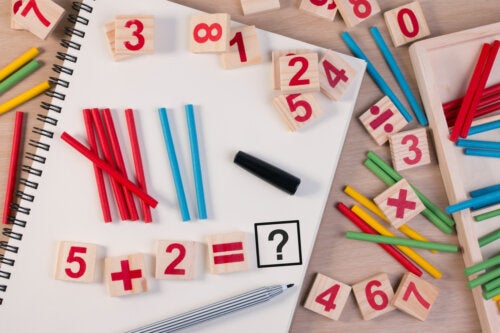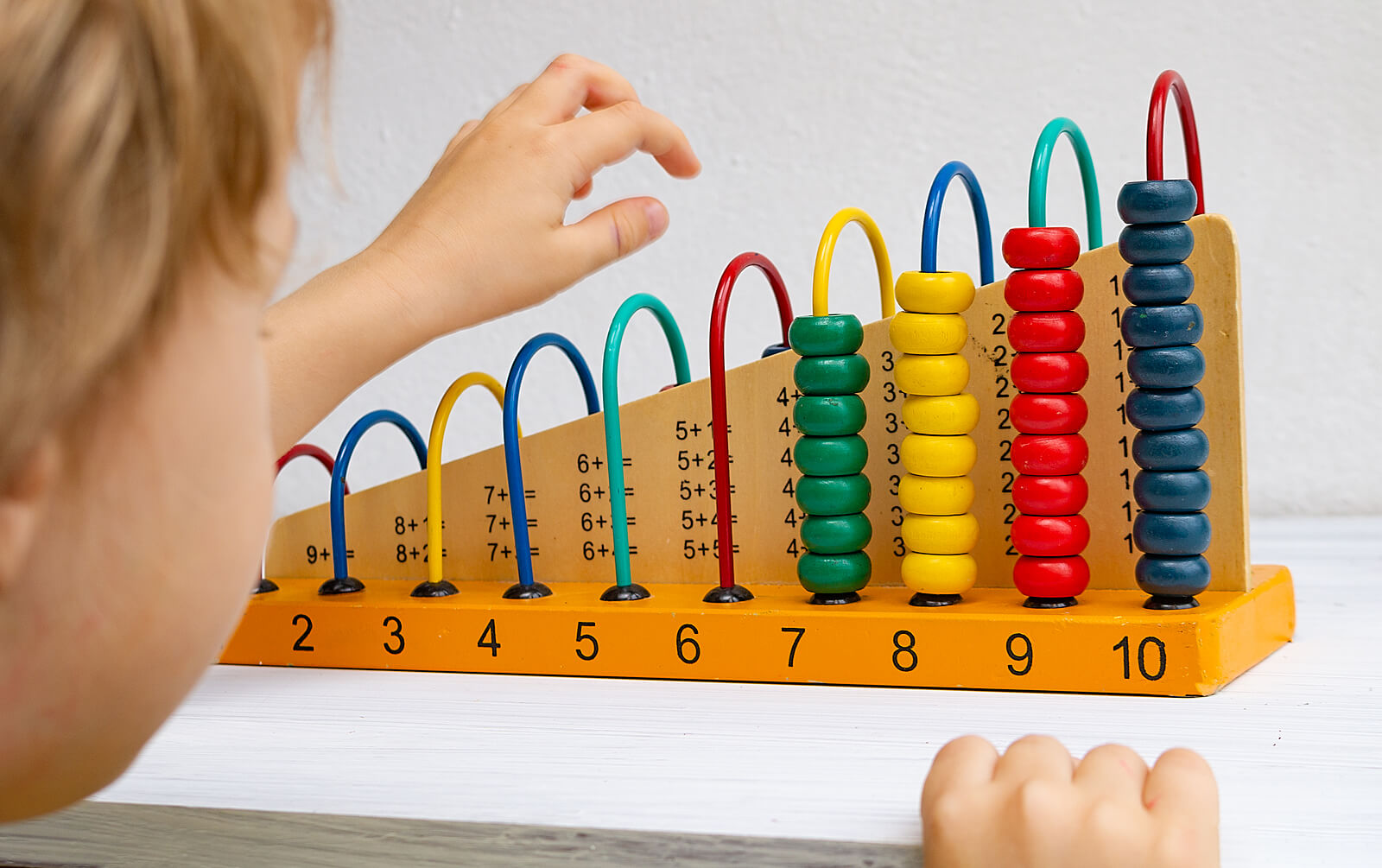Make Adding and Subtracting Easy for Your Child

Learning basic math operations is a challenge for children. So make addition and subtraction easy for your child! This will help them move forward with confidence in this new challenge.
According to Stanford University professor Deborah Stipek, in a BBCNews article, math can be taught from a very early age. And it’s also very important for developing other skills.
“One of the things that mathematics brings to the table is that it teaches us to think logically and deductively. Math helps us develop more cognitive skills than are obvious.”
Let’s start with math at home!
Mathematics in a child’s intellectual development
Although we may not realize it, children can learn mathematics from a very young age. Either when they count their steps or when we encourage them with the typical “how many eyes do you have?” type of question.
From the age of 2 or 3, infants begin to understand basic concepts related to quantities (a lot or a little) and from the age of 4 to 5, they can already do addition and subtraction with help.
However, to perform mathematical operations, a certain level of abstraction and the development of mental calculation are necessary. In general, this doesn’t occur until the age of 6.
Bearing these concepts in mind, adapt the following activities to your child’s stage of development and don’t skip any of them.

Adding and subtracting: How to make it easy for your child?
Games are a very effective resource when teaching and, in this case, they’ll make the process of learning mathematics much easier for children. The idea is that everything should flow naturally and be fun, not a race against time. Take note!
A classic game: Counting, adding and subtracting with your fingers
Who hasn’t learned to use their fingers to do simple calculations? Teach children to count on their fingers and then subtract (put their fingers down) or add (put their fingers up).
Try simple counting, such as, “I have 10 fingers, but I put 3 down. How many are left?”
Add until they’re all the same
A simple exercise to teach children addition is to draw four equal containers on a poster board. Then, in the first one, you must add a known figure, which can be a fruit or a small animal, in the second one two, in the third one three, and in the last one 4. How many elements must they add so that all the containers have the same amount?
Learn to subtract with sets
Draw two sets with different amounts of elements. For example, in set A, place three flowers, and in set B, place five flowers. The question you’ll ask the children is the following: How many flowers must be removed from B to make it equal to A?
Adding and subtracting with an egg carton
This exercise is fantastic, as children, besides adding and subtracting, learn to develop their capacity for reversibility (counting backward and forward).
In the spaces of the egg carton, place different quantities of colored buttons from 1 to 12. Then, start moving them and ask the children to tell you how many are left in each space if you take out or if you add.
The abacus: As old as it is effective
This element is a classic didactic resource widely used to teach subtraction and addition. Teach children to run the beads left and right and ask them how many they have left.
Apps: Learning to add and subtract with technology
We know that children are fascinated by screens, so it’s a good idea to have some apps on hand to teach them to add and subtract.

Make adding and subtracting easy for your child and you’ll probably save yourself a lot of tantrums
Did you know that there’s such a thing as math anxiety? Most children who face math exercises, even if they’re as simple as addition or subtraction, have the preconception that it’s something “complicated” and “useless”. This happens because it’s quite normal for adults at home to refer to the subject in this way.
In addition to this, the way mathematics is taught, where the answers are limited to right or wrong, makes children suffer from a level of anxiety that doesn’t allow them to advance. This situation often ends in tantrums and meltdowns.
The games and activities we’ve suggested lighten the environment and approach mathematical problems from a simpler perspective. Therefore, the learning process is valued and the possibility of obtaining different answers or finding different ways to solve the operations is considered.
You’ll see that if you put these exercises into practice, you’ll succeed in helping your child learn to add and subtract easily. In addition, you’ll both enjoy the process and the result and your child will see that the new knowledge can be used in hundreds of activities.
All cited sources were thoroughly reviewed by our team to ensure their quality, reliability, currency, and validity. The bibliography of this article was considered reliable and of academic or scientific accuracy.
- Centro de aprendizaje y conocimiento en la Primera Infancia (act. 2022) Hablemos de: apoyo al aprendizaje temprano de las matemáticas para los bebés y niños pequeños. Departamento de Salud y Servicios Humanos de Estados Unidos. Disponible en: https://eclkc.ohs.acf.hhs.gov/es/preparacion-escolar/articulo/hablemos-de-apoyo-al-aprendizaje-temprano-de-las-matematicas-para-los-bebes-y-ninos-pequenos
- Diez, B. (2017) Porque es importante que los niños aprendan matemáticas desde la guardería. BBCNews. Disponible en: https://www.bbc.com/mundo/noticias-42075206
- García-Bulle, S. (2019). ¿Qué es la ansiedad matemática y cómo se coló en las aulas? Tecnológico de Monterrey. Disponible en: https://observatorio.tec.mx/edu-news/ansiedad-matematica#:~:text=La%20’ansiedad%20matem%C3%A1tica’%20se%20define,los%20mismos%20alcances%20de%20uno.
- Sonnenschein,S. Dowling, R., Metzger, S. (2018) 5 habilidades matemáticas que los niños en edad preescolar deben aprender: ensénaselas en forma divertida. The Conversation. Disponible en: https://theconversation.com/5-habilidades-matematicas-que-los-ninos-en-edad-preescolar-deben-aprender-enseneselas-de-forma-divertida-103654